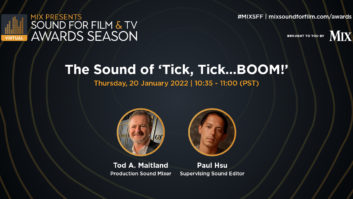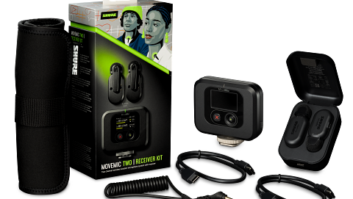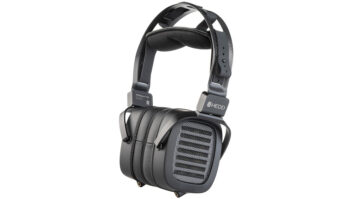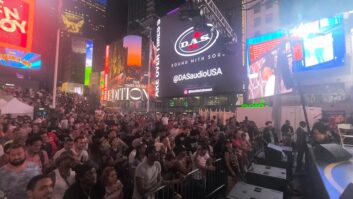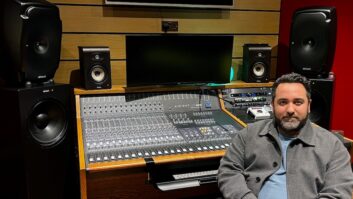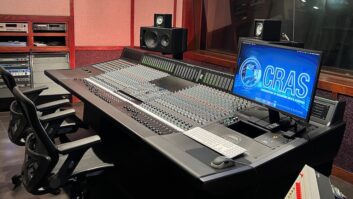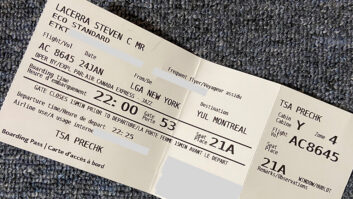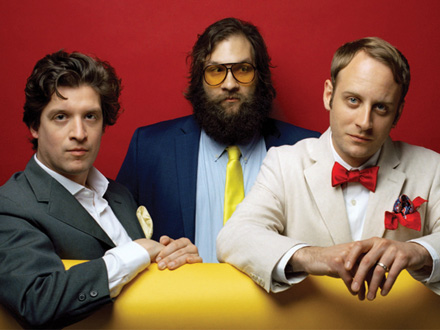
When engineer/producer Adam Landry mentions that his friends in Deer Tick were strongly influenced by The Replacements, it’s like a key turning in a lock. The two bands share a similar combination of qualities: raw, clever, sardonic but sincere. And the deeper a listener digs, the more intricacies are found to the parts, the lyrics and the production as a whole. When choosing material for their next album, this multifaceted group was overflowing with ideas, so frontman John McCauley suggested they make two albums: Deer Tick Vol. 1 is a more acoustic-sounding collection, while Vol. 2 turns it up with electric guitars and a more aggressive approach to keyboards, horns and vocals. The artistic design of two mostly matching album covers belie Deer Tick’s MO: One album is clearly more ketchup, while the other is more mustard… but each is classic in its way.
Vols. 1 and 2 are actually the 10-year-old band’s fifth and sixth full-length releases. Their previous album, Divine Providence, and a few of their many EPs were co-produced and engineered by the bandmembers’ friend Adam Landry (Middle Brother, Vanessa Carlton, Lilly Hiatt), who helped them make Vols. 1 and 2 in Ardent Studios (Memphis, Tenn.).
“We had been doing pre-production and demos at my place [Playground Sound, Nashville] for a couple months, and John [McCauley] had the idea that it would be great to cut the band in a larger studio where they could be free to do more live,” Landry recalls.
He and the band liked the idea of working at Ardent because of its inspiring history and its location—not too far from their Nashville home, but just far enough to avoid distractions. First they booked a seven-day dry run, to make sure they would be comfortable there.

“That studio is impeccable in all areas,” says Landry, who captured everything to a Studer A800 16-track, 2-inch machine. “We tracked a little bit in A and then moreso in C, and mixed in C, as well. A lot of the band’s favorite records were recorded there. The Replacements recorded there. And then just the vibe: Everyone is so friendly. Jody Stephens [the drummer] from Big Star is the General Manager, and he couldn’t have been more of a gentleman. Adam Hill, who assisted me during the engineering and mixing process was just great. He’s worked there for years and knows every corner of it.”
During that first week, in September 2016, Deer Tick recorded five songs—three acoustic and two electric—in Studio A. “The atmosphere was great, so we went back home and we booked out the necessary time to finish the two albums—three weeks-plus in November,” Landry says.
However, the weeks that he and the band managed to free up all together were not available in Studio A, where the project had started.
“In A, they have an old vintage Neve console and it’s beautiful,” Landry says. “You have to stick toothpicks in a lot of the buttons because they have worn out and won’t stick down, and honestly, that’s my dream: an old, weird console that’s quirky but sounds amazing. We were very disappointed initially, when we found out we couldn’t use A for the entire time. It’s funny how the universe works, though. Adam Hill said to me, ‘Come look at C because that’s open the whole time,’ and he promised me that C is an even better room.
“I went in there and I saw that console, and I just said to myself ‘Oh, no. This is horrible,’” Landry continues. “I said that, mind you, loving the room itself. It was smaller but an incredibly well-designed live tracking room, a great control room that was designed so well for mixing and listening.
“I was torn because I was petrified of the console. It’s a custom, half-million-dollar SSL, and whenever I run into something that looks like the bridge of the Starship Enterprise, I want to run the other way. But Adam Hill said, ‘Trust me. You’re going to love it.’ And sure enough, I did. We all ended up loving C.”
Ardent Studio C includes two booths where Landry set up recording stations for the two guitarists, McCauley and Ian O’Neil. The recording chain on acoustics included Neumann KM54 microphones into mic pre’s from the studio’s original Spectrasonics console. This gave the musicians the isolation for delicate acoustic parts and allowed them to shift easily from the acoustic tracks to electric.
The guitar amps were situated in the live room, miked with Shure SM57s, along with the rest of the musicians, so when the mood struck, McCauley and O’Neil could simply make a move.
“We would cut whatever the band was feeling, but on the technical side we didn’t want to have to switch setups over and over again,” says Landry.
Dennis Ryan’s drums, on the other hand, required few changes from song to song. “I unabashedly rob from the great Glyn Johns,” Landry says. He placed a mono Neumann M249 overhead, a Sony C38 on kick, Shure SM57s on snare top and bottom, Sennheiser MD421s on toms, and a stereo pair of Earthworks room mics.
“The primary drum setup was just the overhead, snare mics, kick combo, while the 421s on toms were used in isolated situations. The workflow was smooth,” Landry says. “The meat and potatoes of everything was done live. Most of the keyboards were even done live—the B-3, the Wurlitzer, the piano. But most of the vocals were overdubbed. It’s hard to focus 100 percent on a perfect instrument performance and get keeper vocals.
Still, commitment was the order of the day— especially in light of the limitations of 16 tracks. “We never left 2-inch tape, and we used maximum of 16 tracks,” Landry says. “Some songs were way under and others were right at 16. We like the limitations of destructive editing, where you have to make a decision. And then sonically, people can debate, but in my experience, tape just sounds fantastic in certain areas. I don’t ever like to say, ‘better,’ but it has a specific sound and that sound is classic. It sounds like the records I love.”

